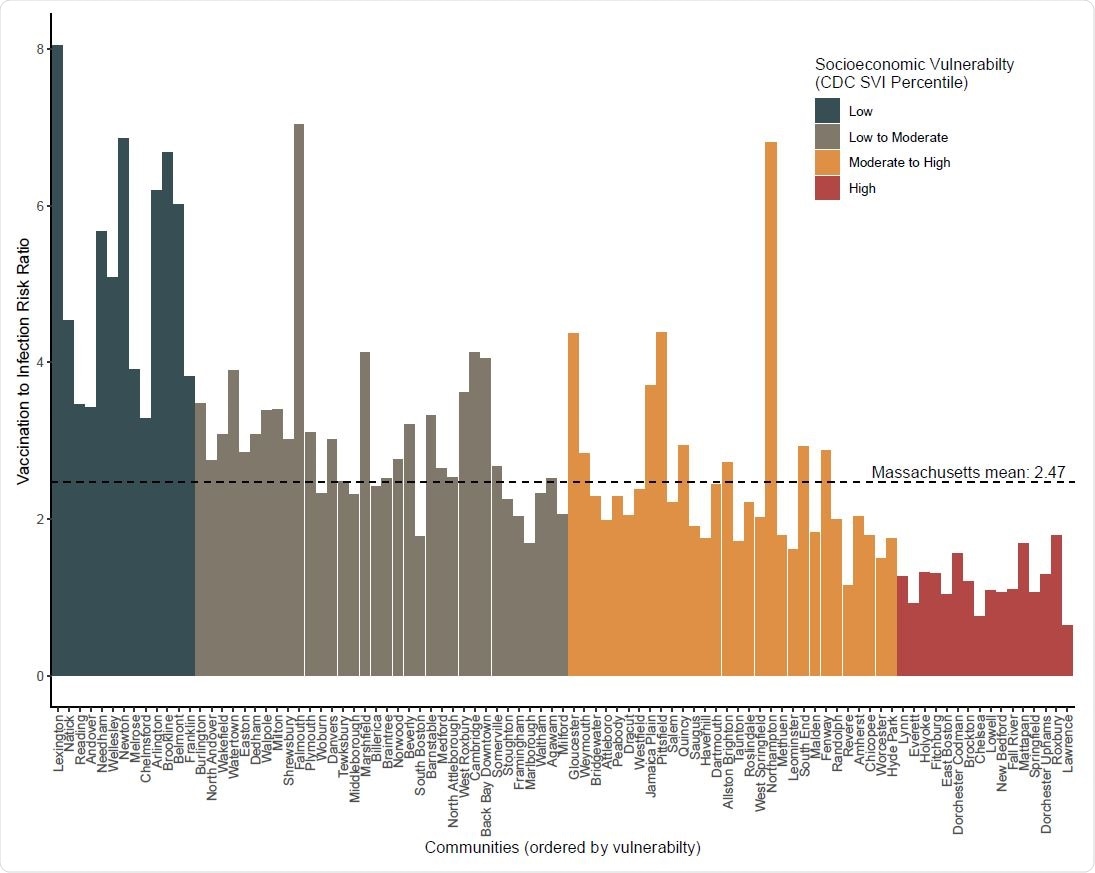While coronavirus vaccines are essential for protection against severe acute respiratory syndrome coronavirus 2 (SARS-CoV-2) and its corresponding variants, vaccinating the world is easier in theory than in practice. Many factors, such as income equality and a history of health disparities in minority populations, have contributed to a disproportionate number of COVID-19 cases and deaths.
A new study led by Bisola O. Ojikutu of Brigham and Women’s Hospital in Boston suggests not only do these communities have a higher infection, but they are also experiencing lower vaccine distribution. The team suggests that reformation for equitable vaccine delivery is necessary to eliminate the severe acute respiratory syndrome coronavirus 2 (SARS-CoV-2).
The researchers write:
“Disparities in vaccine delivery highlight ongoing inequities in our approach to COVID-19 and imperil efforts to control the pandemic.”
The study “Disparities in SARS-CoV-2 Vaccination-to-Infection Risk, Massachusetts, 2020-2021” is available as a preprint on the medRxiv* server, while the article undergoes peer review.
How they did it
The research team collected vaccination data from the Massachusetts Department of Public Health (MDPH) and the Boston Public Health Commission from January 29, 2020, to April 9, 2021, to evaluate the cumulative incidence of SARS-CoV-2 infections. In total, they analyzed data from 276 cities and towns and 15 Boston neighborhoods with over 3,000 residents and used the data to predict future infection risk.
Population estimates from the MDPH and the American Community Survey with data from 2014-2018 were used to evaluate age, race, and a community’s predominant ethnic/minority population. Socioeconomic vulnerability was also assessed in the study.

The vaccination-to-infection risk (VIR) ratio among Massachusetts communities with a population greater than 25,000 residents, ordered by socioeconomic vulnerability. The VIR ratio is calculated as the cumulative number of fully vaccinated individuals divided by the cumulative number of confirmed SARS-CoV-2 infections in each community reported from January 29, 2020 through April 9, 2021.
Lower COVID-19 vaccinations correspond to lower socioeconomic classes
Results showed 8.9% of Massachusetts residents had SARS-CoV-2 infections, and 21.8% were vaccinated — but the numbers varied widely across different communities.
Communities with residents of lower socioeconomic status experienced more infections and fewer vaccinations being administered in the area. Further analysis showed Black and/or Latinx made up 20% of communities with decreased vaccination and higher infection rates.
Having a large percentage of residents 65 years or older was associated with increased vaccine delivery.
The researchers estimate 330,000 more vaccines will need to be distributed to under-vaccinated communities to correct vaccine inequity.
“The disparities reported here are greater than those previously reported using county-level data, and emphasize the importance of monitoring and targeting smaller geographic units to guide the equitable distribution of vaccines.”
Important Notice
*medRxiv publishes preliminary scientific reports that are not peer-reviewed and, therefore, should not be regarded as conclusive, guide clinical practice/health-related behavior, or treated as established information.